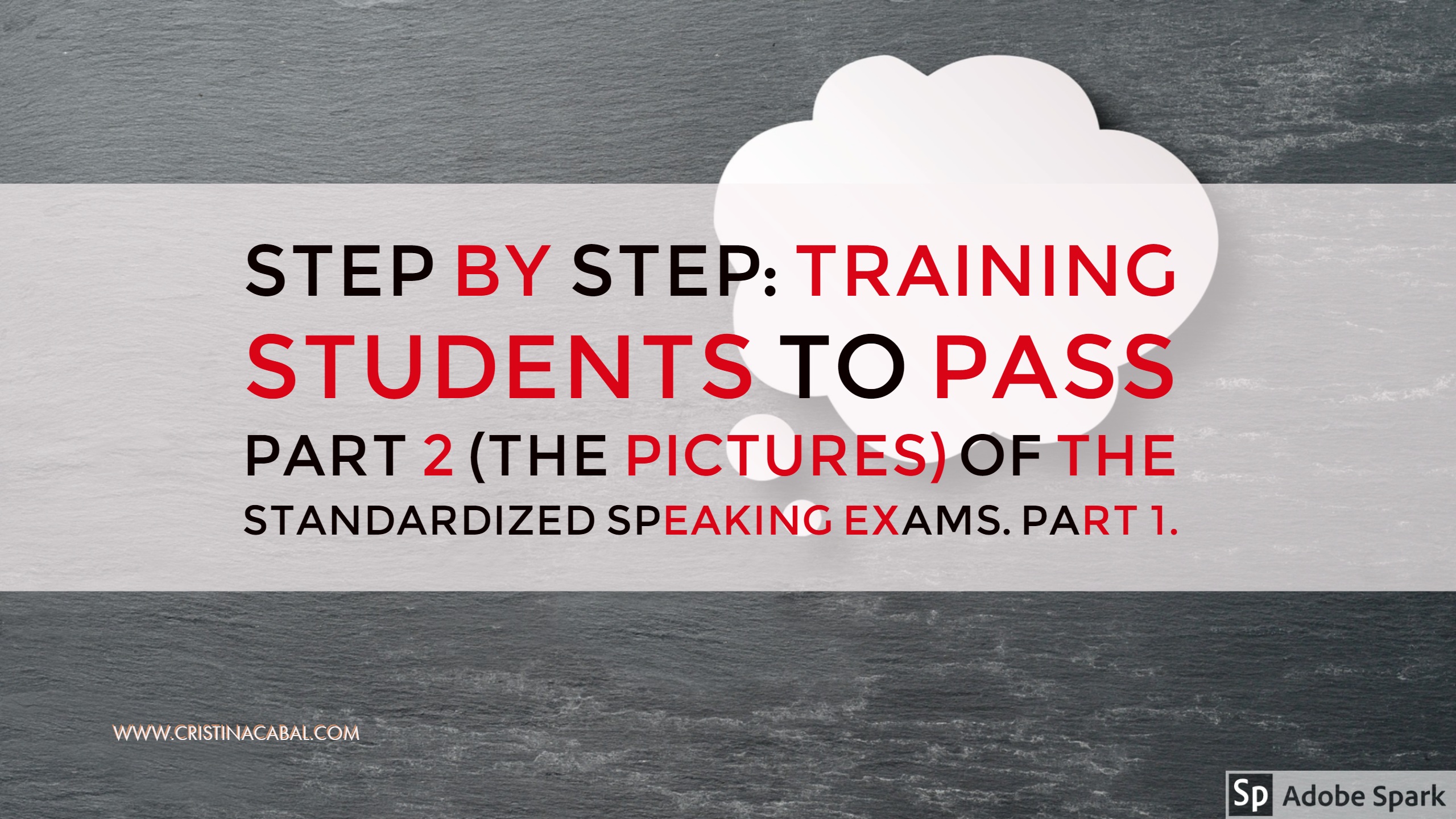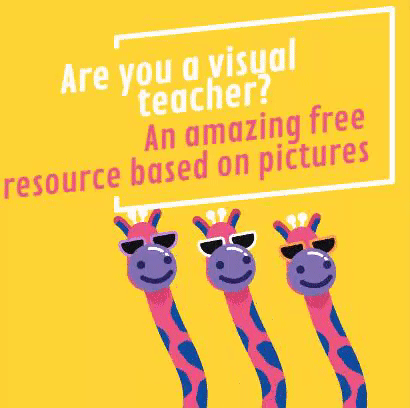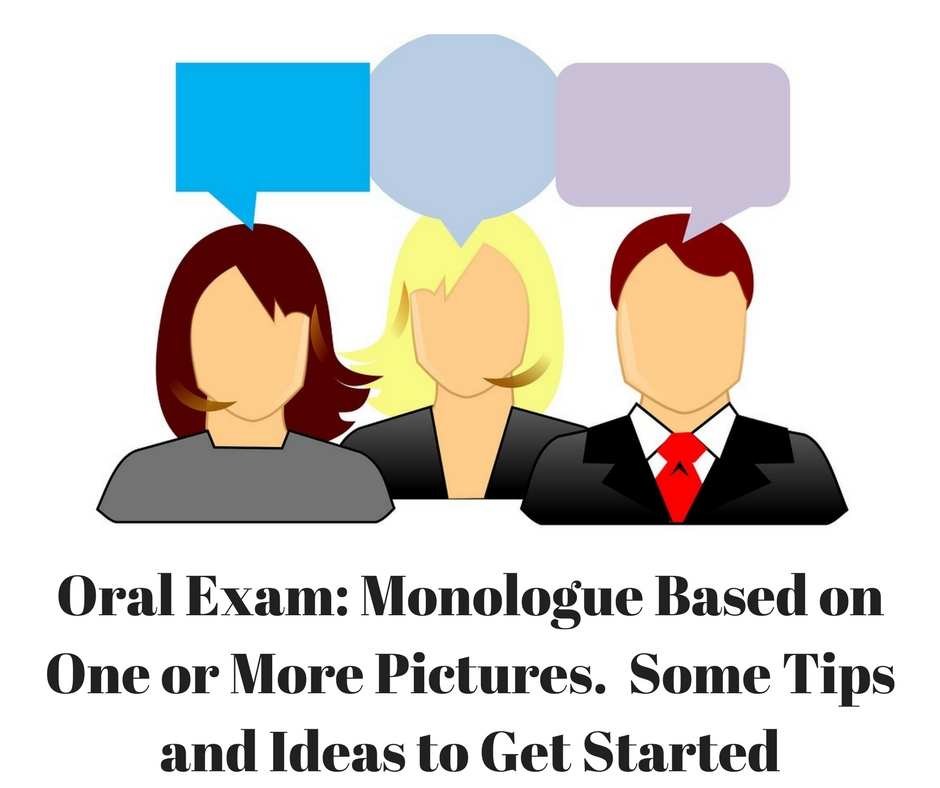Alright, alright!
I know this is the third time I’ve posted this week. It seems I’m full of energy after the Christmas break. I really needed that break, didn’t you? Anyway, happy to go back to teaching, but hanging ominously over my head like a black cloud about to burst is the pressing necessity to start training my students to take their standardized speaking exams which will allow them to promote to the C1 (advanced level).

For those of you who are not familiar with the exam, let me explain how it goes. You might find you can apply it to your own classes, even though it’s not exactly the same kind of exam.
There are two tasks in the speaking exam.
- Part 1: examiner-led conversation. The examiner asks questions about a topic and the students give full answers.
- Part 2: the monologue, where the students are given a set of pictures (normally two or three).
About Part 2
In this second part, the one this whole post is built upon, the student is offered two or three colour photographs. Normally, the photos are in contrast or represent different options of the same issue. Also, there is a title or a statement which suggests the topic of the monologue. After some thinking time, normally a couple of minutes, the student is given the opportunity to speak for about 4-5 minutes without interruption.
At this level, students are expected to talk about the topic using a wide range of vocabulary and grammar structures and they will have to compare and contrast the pictures talking about the most important issues related to the topic.
Students face different fears when preparing for the oral exams. Some of them are:
- Do I know enough specific vocabulary?
- Will I be able to use a variety of structures or will I stick to the simple subj+verb+complement structure?
- Now, the topic is “food”? 3 or 4 minutes talking about food? Seriously? For heaven’s sake, I cannot even talk for one minute, let alone three or four!
Vocabulary and ideas. Keywords here.
How I train my students. Topic: Food
This is how I help them step by step. Bear in mind this is the first post of a series of posts dedicated to training students to pass the oral exam. As students gain confidence, guidance will be less necessary and some of these steps will be either unnecessary or done by students as part of their learning process.
1. Brainstorming vocabulary. Learning progresses through prior knowledge, so tapping into students’ prior knowledge is an essential part of learning.
On the board, we brainstorm the vocabulary they already know. This is an important step because it helps students reinforce and bring to life the vocabulary studied in previous courses.
Then, I ask them some very simple questions where they can activate this vocabulary: What’s your favourite food? What is the most expensive restaurant that you have ever been to? What did you eat there?
2.Acquiring new vocabulary. We work on new vocabulary using a number of written and oral exercises. (Any good course book provides enough vocabulary input, at least to get started). It’s important to emphasize here the importance of learning words in chunks. Surely, you can teach the word “ obesity” on its own, but there some other words you really want to teach in collocations like, for example, “eating disorders” or to “be obsessed with”. Also important, essential I should say, is pronunciation.
3. Getting Ideas. Reading and Speaking. More often than not students find it hard to think on their feet. They find it difficult to come up with ideas that will fill in the 3 or 4 minutes allowed for this part.
You might disagree with me here, but I always tell them that oral exams are like the rest of the exams they might take. They need to prepare. They need to study.
Lack of preparation might result in something I’ve seen very often when assessing oral exams; students might talk for one minute and then, suddenly, stop. Now, you might wait patiently for them to come up with something else but the truth is that very often, when prompted to continue, they just repeat the same ideas they have already used. Why? most of the times due to lack of preparation. They mistakenly think that they don’t need to study for oral exams. They do.
So, listen up dear students! You need to study for oral exams.

Reading about different issues related to the topic not only reinforces the vocabulary they have learnt and gives them a chance to see it used in context but also gives them ideas of what they can talk about when doing the real task.
I normally use short extracts from The Pais in English. Here’s my choice of extracts for the topic of food. This how we do it:
- We read the extracts in class or set the reading task as homework.
- We underline relevant vocabulary.
- Students discuss the questions in pairs, followed by class discussion.
4. The pictures. I am lucky to have a computer and an overhead projector in my class, so I normally display a collage with two or three related pictures on the board. You can see the ones I have used for this topic here and here.
Together we read the title and brainstorm ideas to fill in these 3 or 4 minutes. This step should be easy now as we have previously discussed some ideas in the previous task. Some ideas could be:

Together, we brainstorm vocabulary
- Pesticides
- Label
- To be obsessed with
- Bulimia
- Fats
- Proteins
- Carbs
- …etc
- Tips.
- Look at the pictures and the title if there is one. It will hint at what you need to talk about.
- If you are given some thinking time, use it.
- Remember that you are not asked to describe in detail what you can see in the pictures. You are asked to compare and contrast the pictures talking about the topic.
- Focus on three or four ideas and develop them as much as you can without repeating yourself. Start with a short introduction about the topic, talk about the first idea, develop it; start with the second idea and repeat procedure.
- Don’t forget to use specific vocabulary and a variety of structures.
- Essential: practise a lot and record yourself taking the exam.
6. Homework. Further practice. Collaboratively writing on a Padlet.
This follow-up task has two main aims:
- to reinforce acquired knowledge and strategies
- to share ideas. By asking students to write on a collaborative Padlet, they benefit from each other and see other ideas which might help them improve their own performance.

All the Padlets created for this purpose will then be shared in a single one where students, at a glance, can decide what topic to revise.
In the next post, we will move from writing to speaking on a Padlet.









